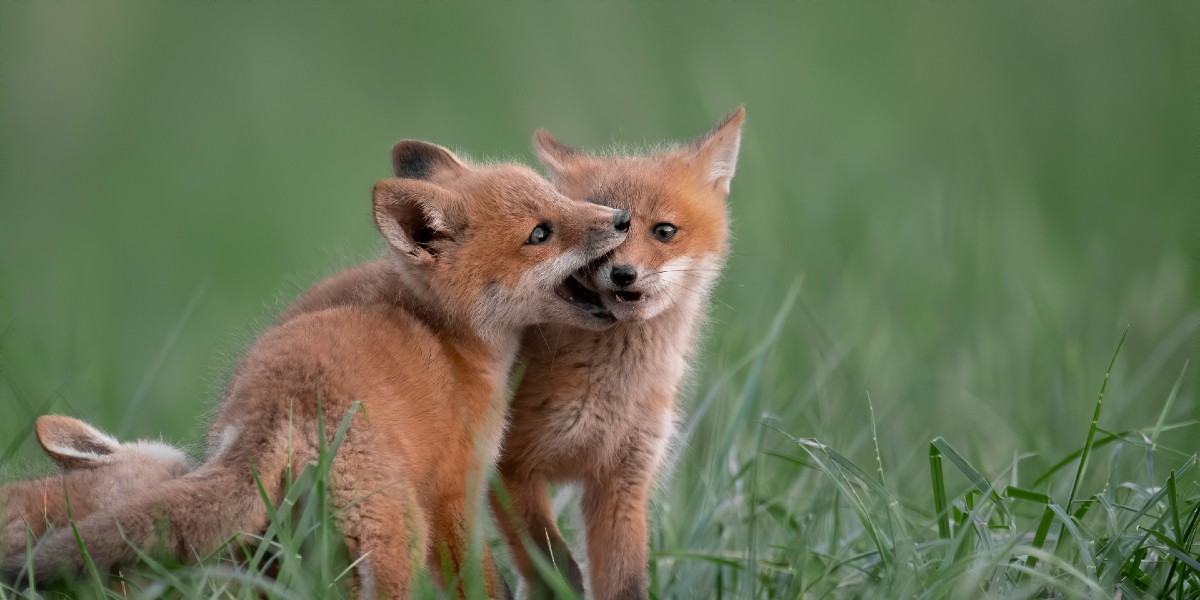Brandon Keim is a freelance journalist who writes about nature and animals through the lens of science. His work has appeared in publications including The New York Times, The Atlantic, WIRED, and Nautilus, where he is presently a contributing editor.
What’s the big idea?
Science journalist Brandon Keim has a challenge for humans: What would happen if we took the minds of other animals—all animals—seriously? It’s easy to accept the individuality of a dear pet companion, but what if we took the inner emotions of all living creatures to heart? How would that affect food production, conservation, and natural history, among other disciplines and industries?
Many readers are probably shying away from imagining this reality. Humans have depended on exploiting the natural world for so long that it is uncomfortable to consider the complexity of all animals’ lived experiences. Keim requests our gaze to take a long, awe-struck look at the inner lives of animals. He takes us to wildlife hospitals, under backyard decks, and into courtrooms to meet anew the wild creatures that populate our communities. The biology, philosophy, and policy implications of animal intelligence are not to be feared; it is aglow with opportunity and realistic harmonies. Allowing ourselves to discover the depths of wildlife’s pleasure and pain helps us better understand ourselves, untapped non-human kinships, and how to chart a course for a kinder, gentler planet for all of life—including us.
Below, Brandon shares five key insights from his new book, Meet the Neighbors: Animal Minds and Life in a More-than-Human World. Listen to the audio version—read by Brandon himself—in the Next Big Idea App.

1. The construction of animal unintelligence.
When I first started writing about the science of animal intelligence, my broad-brushstroke understanding of the history went something like this: For the past few centuries, conventional wisdom generally held animals to be unintelligent—instinct-driven, incapable of reflection or reason, feeling only the coarsest emotions. Now, however, scientists were discovering otherwise.
That wasn’t incorrect, but it glossed over just how absurd this sensibility was in the first place. It belonged to a strain of thought that could be traced back two thousand years, from ancient Greek philosophers who thought animals were capable of feeling only hunger and pain and placed humanity atop a hierarchy both taxonomic and moral; to medieval Christian theologians fixated on asserting human supremacy over animals; to Enlightenment thinkers who gave all that a scientific veneer.
Many people rejected those ideas, but the denial of animal minds prevailed, at least within formal knowledge-making. This should come as no surprise. A sense of animals sharing fundamental mental properties with humans and the ethical implications of that commonality were incompatible with societies predicated on the exploitation of nature and the use of captive animals as an endless source of cheap labor.
By the early 20th century, scientists were instructed to reject assertions of human-style thinking in animals until every other possible explanation had been ruled out. Stupidity was assumed by default. A sense of animals as meaningfully intelligent was kept at the fringes of intellectual life. This not only made it easy to deny the intelligence of animals but to recognize it selectively: in cats and dogs, for example, while claiming uncertainty about cows or turtles. And when intelligence was acknowledged, it could be abstracted: humans experience love, but other creatures have pair bonds. No longer is that the conventional wisdom—and it was never wise.
2. The blossoming science of animal intelligence.
In the late 1970s, zoologist Donald Griffin proposed that animals could think and feel and that scientists could study their mental processes. In doing so, he “broke a scientific taboo,” recounts his New York Times obituary. Nowadays, scientific journals swell with studies of animal minds.
Research has evolved from describing sophisticated intelligence in a select few species—including elephants, great apes, cetaceans, and corvids—to studying it in a great many. These include not only mammals and birds but also reptiles, amphibians, fish, and insects.
“The social behaviors of animals are increasingly understood through a lens of intelligence.”
An emphasis on the information-processing aspects of intelligence—memory, problem-solving, attention, and so on—has also expanded to include emotion. (Some of my favorite studies are about the moods of bumblebees.) The social behaviors of animals are increasingly understood through a lens of intelligence: the cultural knowledge that guides deer migration, for example, or the democratic decision-making practices of sperm whales. And ever more nuanced capacities are now being examined: regret, aesthetics, and an understanding of death.
One profound and emblematic development involves the quality of self-awareness. Since the late 1970s, the mirror self-recognition test has been the gold standard for evaluating whether an animal has a sense of self as an entity in the world. Only a handful of species pass the test. Some scientists, however, think the mirror test overemphasizes sight. They’ve developed self-recognition tests that rely on other senses, such as scent.
Still, others argue that the mirror test only measures a very specialized type of self-awareness, one given to third-person self-reflection. A more fundamental form of self-awareness emerges from the brain’s integration of sensory information with a mental representation of one’s environment. This sort of self-awareness is ubiquitous; far from being rare, a sense of self is common. It’s no longer unscientific to see “human” qualities in animals. What’s unscientific is to ignore them.
3. Animals have been missing from how we think about nature.
A deeper scientific appreciation of animal intelligence has fed naturally into the arguments of people who want to reexamine our relationships to animals: to those used for food, research, labor, and as our companions. The implications for our relationships to wild animals and nature are the subject of Meet the Neighbors.
One subtle implication is realizing how the denial of animal intelligence has shaped our ideas about nature. By “our,” I mean the so-called Western traditions into which most people in North America and Europe are socialized. Of course, there are other ways of thinking, most prominently Indigenous ontologies.
“To relate to animals as fellow persons is somehow less outdoorsy than looking at them down the barrel of a gun.”
Beauty and wonder, transcendence, resources, wildlife management, stewardship, conservation and conservation biology, biodiversity, environmentalism, sustainability, and even natural history are common “nature” subjects. Animals as intelligent beings, as individuals who share essential mental properties with us as fellow persons, only rarely appear within those topics. Individual environmentalists and nature lovers might well empathize with animals as fellow persons—but that perspective is not part of those disciplines. It still carries the tinge of anthropomorphism. To relate to animals as fellow persons is somehow less outdoorsy than looking at them down the barrel of a gun.
In recent years, people have become more aware of an idea popularized by the historian William Cronon in The Trouble with Wilderness: our ideas about nature are social constructs shaped by historical, cultural, and political forces. It’s not uncommon to hear conservationists and environmentalists talk about the human-nature divide and the need to develop new, more intimate ways of relating to the natural world. Yet the social construction of animals goes largely unexamined. This isn’t because people are callous. It’s simply a cultural habit of mind.
4. Representation for animals.
Who belongs to the political community? To Aristotle, membership was reserved for those who could reason and speak—which, of course, excluded animals, whom he deemed incapable of exercising those faculties. That attitude is baked into our politics and institutions, and the lack of representation for animals is a default that’s taken for granted. How could it be any other way?
This is deeply at odds with a fundamental democratic principle: Anyone whose life is affected by a community’s decisions deserves to have a voice in them. Since a dog or a woodpecker can’t vote or speak up at a City Council meeting, other ways should be found to represent their interests in political and institutional governance.
Expanding the franchise for animals may seem frivolous and unrealistic at a time when so many human beings are still disenfranchised. But doing so affirms the values of liberal democracy, and there are already places where this is happening.
“Anyone whose life is affected by a community’s decisions deserves to have a voice in them.”
In Toronto, for example, the city’s cormorant colony—the largest in North America—is managed by a committee that includes people who speak on the birds’ behalf. Animal advocates have pushed for inclusion on the committees that set priorities and policies for state wildlife agencies but are staffed by representatives of the hunting, fishing, and trapping communities. New York City’s government features a person tasked with advocating for animals; it’s a non-voting position, but it’s still a chance to be heard. And this idea need not be restricted to government. How about animal representatives on corporate boards of directors or in university landscaping departments? The interests of animals and humans may clash, but making sure that animal interests are represented is the right thing to do.
5. The joys of wildlife.
An advantage of thinking of animals as automatons or in terms of species and populations is that one can avoid dwelling on the bad parts of life: predation, disease, injury, and starvation.
“The total amount of suffering per year in the natural world is beyond all decent contemplation,” wrote Richard Dawkins, expressing a common sentiment. Some people use it to rationalize the mistreatment of captive animals: at least they’re spared life in the wild! And some philosophers go in another direction. At least hypothetically, they say, people should want to eradicate predators and even destroy habitats, thus sparing future animals the torture of existence.
It’s important to reckon with the reality of suffering, but that bleak view exaggerates the negatives. Research describes the positives of animal life: the pleasures taken by bees sipping nectar, for example, or birds hitting the right notes while practicing their songs. The very act of making a choice is intrinsically rewarding. Companionship brings satisfaction to social creatures, and the phenomenon of social buffering—in which discomforts are experienced less intensely in the company of others—is found in many animals, even fish. Such insights only scratch the surface of animal subjectivity, but they suggest how rich it can be and how misleading it is to fixate on suffering.
Just as our own lives are a tapestry of experiences, from the wonderful to the terrible to the mundane, so it is with animals. Someday, perhaps, we’ll understand how to manage ecosystems for happiness, much as we now manage them with biodiversity or resource production in mind. In the meantime, it’s enough to know that protecting nature doesn’t simply protect habitats; it protects homes and the joys of all who live there.
To listen to the audio version read by author Brandon Keim, download the Next Big Idea App today:































